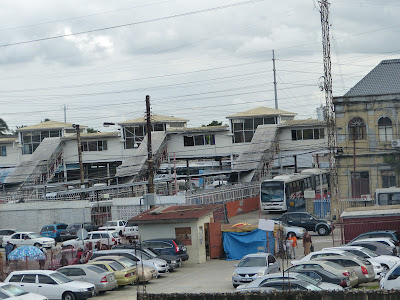 |
| The International Waterfront Center |
Urban landscapes are not static and are constantly changing due to economic, social, cultural and environmental factors.
Throughout my past blog post, I have discussed some of the main characteristics of the city and how the county's culture, norms and values help give the city of Port-of-Spain its urban shape or form. Our culture is greatly influenced by foreign cultures through globalization and is therefore changing or evolving. One's attitude may also change due to such influences leading to such changes in urban form.
My first blog post the "Eats of the City" showcased the countries diverse and most liked local street foods. However, it also pointed out the rise of the many multinational fast food industries like Wendy's and Mac Donald's that are taking over the district.
A major change in city structure and function is in the Woodbrook vicinity. Where the past primarily residential space is changing and developing into a more commercial district to facilitate the growing demand for clubs and bars. Homes in the area, especially on the Aripita Avenue road is being bought and re-constructed into businesses. Residents who maybe emotionally attached to their homes are left with the choice either to stay in such a commercially developing environment or to leave their homes behind and reside elsewhere.
The structure and architectural design of buildings are also changing with time and modernity. The old traditional wooden or basic concrete structures within the city are being reconstructed into designs that are not just more functional but also aesthetically pleasing and environmentally friendly. For instance some new building designs implementing the use of solar energy.
The Port-of-Spain International Waterfront Center is an example of changing landscape design into a more modern and functional facility. It is not just a place of work but also a place of recreation and includes a hotel encouraging living spaces within the city.
"A Sustainable City is one that offers a high quality of life for its
inhabitants, minimises their impact on the natural environment, and has a
government that can maintain its economic growth"
There are many new and upcoming changes occurring within the city of Port-of-Spain both physical and social hopefully leading to a more sustainable, especially more environmentally sustainable city.
 |
| Pictures of past and new structural building designs |
An article on Port-of-Spain and a Sustainable City
http://newsday.co.tt/news/0,170456.html
The Changing urban landscape of China
http://www.wiley.com/WileyCDA/Section/id-812246.html
Something I came across while writing this blog. ~<:D
http://smileuronmyblog.tumblr.com/post/48212826649
BYE.....for now!






















